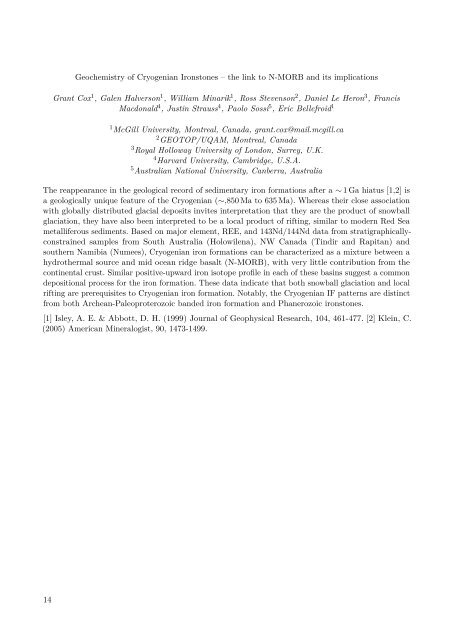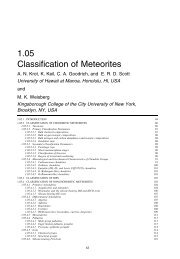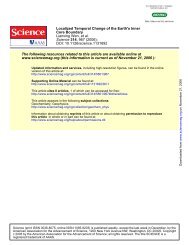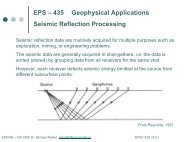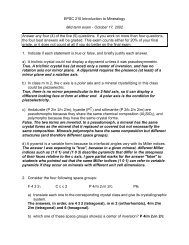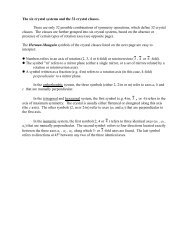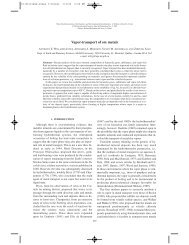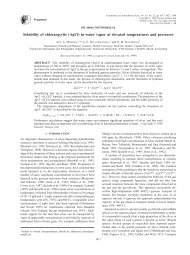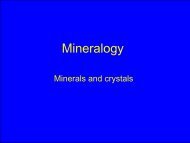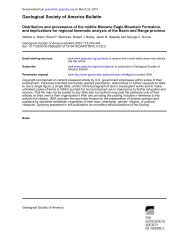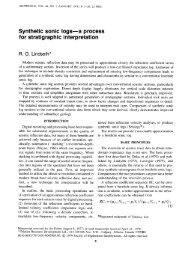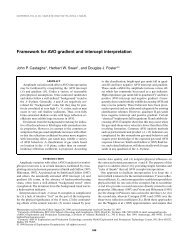Symposium Program - Precambrian Research Office - McGill ...
Symposium Program - Precambrian Research Office - McGill ...
Symposium Program - Precambrian Research Office - McGill ...
Create successful ePaper yourself
Turn your PDF publications into a flip-book with our unique Google optimized e-Paper software.
Geochemistry of Cryogenian Ironstones – the link to N-MORB and its implications<br />
Grant Cox 1 , Galen Halverson 1 , William Minarik 1 , Ross Stevenson 2 , Daniel Le Heron 3 , Francis<br />
Macdonald 4 , Justin Strauss 4 , Paolo Sossi 5 , Eric Bellefroid 1<br />
1 <strong>McGill</strong> University, Montreal, Canada, grant.cox@mail.mcgill.ca<br />
2 GEOTOP/UQAM, Montreal, Canada<br />
3 Royal Holloway University of London, Surrey, U.K.<br />
4 Harvard University, Cambridge, U.S.A.<br />
5 Australian National University, Canberra, Australia<br />
The reappearance in the geological record of sedimentary iron formations after a ∼ 1 Ga hiatus [1,2] is<br />
a geologically unique feature of the Cryogenian (∼,850 Ma to 635 Ma). Whereas their close association<br />
with globally distributed glacial deposits invites interpretation that they are the product of snowball<br />
glaciation, they have also been interpreted to be a local product of rifting, similar to modern Red Sea<br />
metalliferous sediments. Based on major element, REE, and 143Nd/144Nd data from stratigraphicallyconstrained<br />
samples from South Australia (Holowilena), NW Canada (Tindir and Rapitan) and<br />
southern Namibia (Numees), Cryogenian iron formations can be characterized as a mixture between a<br />
hydrothermal source and mid ocean ridge basalt (N-MORB), with very little contribution from the<br />
continental crust. Similar positive-upward iron isotope profile in each of these basins suggest a common<br />
depositional process for the iron formation. These data indicate that both snowball glaciation and local<br />
rifting are prerequisites to Cryogenian iron formation. Notably, the Cryogenian IF patterns are distinct<br />
from both Archean-Paleoproterozoic banded iron formation and Phanerozoic ironstones.<br />
[1] Isley, A. E. & Abbott, D. H. (1999) Journal of Geophysical <strong>Research</strong>, 104, 461-477. [2] Klein, C.<br />
(2005) American Mineralogist, 90, 1473-1499.<br />
14


